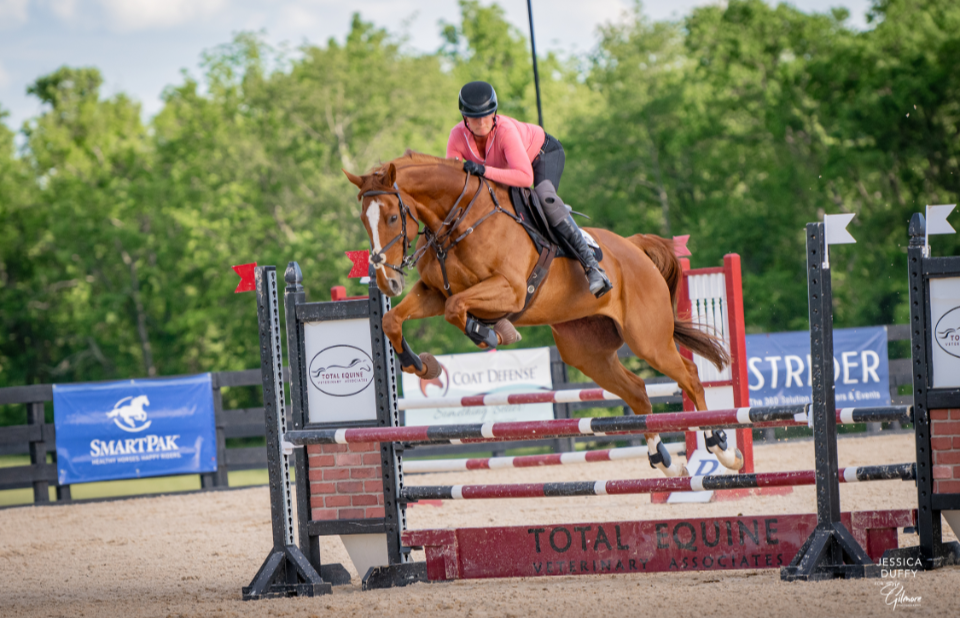
Tim Price and Jarillo. Photo by Tilly Berendt.
The order of competitors has been drawn for the much anticipated Defender Kentucky Three-Day Event, presented by MARS Equestrian. Held April 24-27, 2025 at the Kentucky Horse Park, the CCI5*-L boasts 40 entries.
New Zealand’s Tim Price comes forward as trailblazer with Lucy Allison, Frances Stead, and James and Rachel Good’s Jarillo. His other two entries, Happy Boy and Falco will follow 20th and 38th, respectively. Harry Meade will be second to compete aboard Superstition, and Boyd Martin is third with Fedarman B as both these riders also have three horses entered.
The 2022 champions Michael Jung and fischerChipmunk FRH come early in the order as they have been drawn as the eighth combination.
The full draw order can be found at the bottom of this post. For a deeper dive into the 5* entries, click here.

Lisa Barry and Rosie’s Aventadora. Photo by Shelby Allen.
Lisa Barry will be the pathfinder for the Cosequin Lexington CCI4*-S with her own and Denise Barry’s Rosie’s Aventadora. Entires have dropped to 60 in this competitive division, as seven names have disappeared since entries went live, most notably, Will Coleman and Chin Tonic HS, who were early favorites.
Click here to see the full order for the 4*, and click here for EN’s 4* entry preview.
Defender Kentucky: [Website] [Tickets] [Schedule] [EN’s Coverage]
EN’s coverage of Defender Kentucky is supported by Kentucky Performance Products. To learn more about Kentucky Performance Products’ science-backed nutritional support products, click here.
| NO. | RIDER | HORSE/OWNER | NAT. |
|---|---|---|---|
| 1 | Tim Price | JARILLO Lucy Allison, Frances Stead, James and Rachel Good |
NZL |
| 2 | Harry Meade | SUPERSTITION Mandy Gray, Harry Meade |
GBR |
| 3 | Boyd Martin | FEDARMAN B Annie Goodwin Syndicate |
USA |
| 4 | Emily Hamel | CORVETT Black Flag Option, LLC |
USA |
| 5 | Jessica Phoenix | FLUORESCENT ADOLESCENT Makayla Rydzik |
CAN |
| 6 | Lindsay Traisnel | BACYROUGE Patricia Pearce |
CAN |
| 7 | Sharon White | CLAUS 63 Sharon White |
USA |
| 8 | Michael Jung | FISCHERCHIPMUNK FRH Joachim Jung, Deutsches Olympiade-Komitee für Reiterei e.V., Klaus and Sabine Fischer |
GER |
| 9 | Clarke Johnstone | MENLO PARK Clarke Jonstone, Jean Johnstone, Rob Johnstone |
NZL |
| 10 | James Alliston | KARMA Alliston Equestrian, Ric Plummer |
USA |
| 11 | Caroline Pamukcu | HSH DOUBLE SIXTEEN Double Sixteen Partnership |
USA |
| 14 | Jonelle Price | HIARADO David and Karie Thomson |
NZL |
| 15 | Jennie Brannigan | FE LIFESTYLE Tim and Nina Gardner |
USA |
| 16 | Bruce (Buck) Davidson Jr | SOROCAIMA Buck Davidson and Carl Segal |
USA |
| 17 | Calvin Böckmann | THE PHANTOM OF THE OPERA Calvin Böckmann, Jason Böckmann, Liam Böckmann, Roger Böckmann, Simone Böckmann |
GER |
| 18 | Arden Wildasin | SUNDAY TIMES Arden Wildasin |
USA |
| 19 | Lauren Nicholson | I’LL HAVE ANOTHER Brandye Randermann |
USA |
| 20 | Tim Price | HAPPY BOY Susan Lamb, Therese Miller, Tim Price |
NZL |
| 21 | Harry Meade | ET HOP DU MATZ Mandy Gray, Harry Meade |
GBR |
| 22 | Boyd Martin | LUKE 140 Luke 140 Syndicate |
USA |
| 23 | Libussa Lübbeke | CARAMIA 34 Annelie and Martin Lübbeke |
GER |
| 24 | Katherine Coleman | MONBEG SENNA Kalai LLC |
USA |
| 25 | Monica Spencer | ARTIST Spencer Eventing |
NZL |
| 26 | Cassie Sanger | REDFIELD FYRE Cassie Sanger |
USA |
| 27 | Brooke Burchianti | COOLEY SPACE GREY Karin Burchianti |
USA |
| 28 | Julie Wolfert | SSH PLAYBOY Julie Wolfert, Renee Senter, Sheri Gurske |
USA |
| 29 | Tom McEwen | BROOKFIELD QUALITY Alison Swinburn, John and Chloe Perry |
GBR |
| 30 | Shannon Lilley | EINDHOVEN GARETTE Shannon Lilley, Alex Lilley |
USA |
| 31 | Caroline Pamukcu | SHE’S THE ONE Andy and Mollie Hoff, Sherrie Martin, Caroline Pamukcu |
USA |
| 32 | Rebecca Braitling | CARAVAGGIO II Arnell Sporthorses, Rebecca Braitling |
AUS |
| 33 | Mary Bess Davis | IMPERIO MAGIC Mary Bess Davis |
USA |
| 34 | Jennie Brannigan | TWILIGHTSLASTGLEAM Nina Gardner |
USA |
| 35 | Matthew Brown | ALDERWOOD Shelley Onderdonk, D.V.M. |
USA |
| 36 | Ema Klugman | BRONTE BEACH Z Bronte Beach Syndicate |
AUS |
| 37 | Lucienne Bellissimo | DYRI Horse Scout Eventing, LLC |
GBR |
| 38 | Tim Price | FALCO Sue Benson, Tim Price |
NZL |
| 39 | Harry Meade | GRAFENNACHT Amanda Gould |
GBR |
| 40 | Boyd Martin | COMMANDO 3 Yankee Creek Ranch, LLC |
USA |
EN’s coverage of Defender Kentucky is supported by Kentucky Performance Products. To learn more about Kentucky Performance Products’ science-backed nutritional support products, click here.




















































